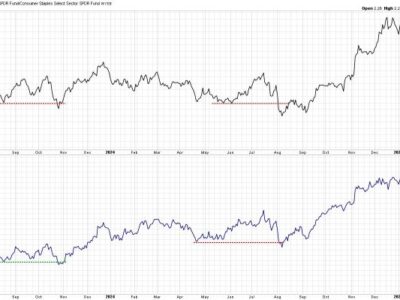
The Menace of Fiscal QE
By George Selgin
The Cato Institute, 2020, $14.95, 126 pages
George Selgin’s book The Menace of Fiscal QE, published by the Cato Institute in 2020, is particularly relevant today following debt limit negotiations that demonstrated how reluctant U.S. politicians are to grapple with unsustainable federal spending. The book is about the potential dangers of using quantitative easing (QE) as a tool for financing government spending.
The dangers are manifold. Selgin warns against engaging in fiscal QE because it would undermine the Fed’s independence and credibility, erode democratic oversight and transparency of fiscal policy, and could open the floodgates to backdoor spending. It might also relieve, at least temporarily, the pressure to deal with unsustainable entitlement programs – all while still resulting in higher inflation. The dangers of fiscal QE are great, the harms would be widespread, and the political temptation to use it will grow.
Selgin highlights dangerous precedents in U.S. history when policymaker used QE for non‐monetary ends and details growing interest in fiscal QE among certain economists and politicians today who are looking for a “free lunch” government funding mechanism.
QE is the practice of the central bank buying large amounts of assets, such as government bonds or mortgage‐backed securities, to inject money into the financial system. QE can help stimulate economic activity and prevent deflation in times of crisis when interest rates are at their zero lower bound and ordinary monetary policy tools can no longer be relied upon. However, QE also has costs and risks. It distorts asset prices and creates moral hazard, where investors take excessive risks to chase higher yields. Fiscal QE is when the Federal Reserve buys assets and expands the Fed’s balance sheet when there is no compelling macroeconomic reason for doing so, primarily, or solely to support government spending objectives.
Congress’s adoption of the Fiscal Responsibility Act (FRA), which raises the debt limit through 2024 in exchange for weak discretionary spending limits, unintentionally shows how politically tempting fiscal QE is. As the Congressional Budget Office pointed out, debt will still rise substantially, even assuming full implementation of the FRA’s deficit reduction, to 115 percent of gross domestic product (GDP) by 2033. Had members of Congress been serious about controlling the growth in the debt before increasing the debt limit again, they would have adopted meaningful fiscal targets and a pathway to reforming federal health care and Social Security – the key drivers of federal spending growth. Instead, they will have an even bigger fiscal challenge on their hands next time the debt limit comes around, sometime in spring or summer of 2025. Political obstacles to reforming old age entitlement programs create a temptation to find unorthodox ways out of the fiscal mess for some politicians and big government advocates. It’s no wonder some are considering resorting to fiscal QE.
Selgin shares examples of politicians and economists advocating for fiscal QE, including to finance student loan debt forgiveness and the Green New Deal. Selgin also identifies past examples of fiscal QE, including the Fed’s purchase of mortgage‐backed securities during and after the Great Recession, “not only to stimulate aggregate investment…but also to support the housing market,’ and Congress raiding the Fed’s surplus account to finance infrastructure as authorized in the 2015 Fixing America’s Surface Transportation (FAST) Act. Selgin is not opposed to QE per se, recognizing that there are valid macroeconomic rationales for using it when interest rates are at their zero lower bound. Rather, Selgin only argues against using QE to pursue fiscal policy.
Fiscal QE proponents claim that it can provide a free lunch for the government, by allowing it to spend more without raising taxes or borrowing from the public. They also argue that fiscal QE can boost aggregate demand and economic growth more effectively than conventional monetary or fiscal policy. Selgin debunks both arguments, pointing out that fiscal QE would have inflationary consequences, shift risks from bondholders to taxpayers, and impair central bank independence. He also demonstrates that fiscal QE would not stimulate the economy more than conventional policy, but rather create distortions and inefficiencies in resource allocation and income distribution, including generating financial instability by encouraging excessive risk taking among investors. Selgin concedes that despite fiscal QEs downsides, it has great appeal largely due to fiscal illusion. He writes:
“[M]yopic politicians have long been tempted to exploit a central bank’s lending powers even when doing so ultimately sponsors unwanted inflation. “Printing money” can be much easier than raising taxes, and less costly in the short run than competing with private sector borrowers for credit. Also, the public may not grasp the connection between fiscal QE and any inflation that follows.”
While this author is squarely in the camp of those who believe that current government spending is unsustainable and threatens America’s prosperity, Selgin’s arguments should appeal to a broader audience. By enabling “backdoor” spending, that is, spending that bypasses congressional appropriations, resort to fiscal QE should also concern those who believe that the federal government isn’t spending enough. Anyone who cares about democratic, transparent government, regardless of their views on the proper size and scope of federal spending, should find a Fed that blurs the lines between fiscal and monetary policy unacceptable.
Selgin urges the Fed to restore its pre‐crisis operating procedures to limit the dangers of resorting to fiscal QE. Specifically, the Fed should return to a corridor system, where it sets a target range for the overnight interest rate and adjusts its supply of reserves accordingly. “A corridor system reform would guard against fiscal QE by constraining the size of the Fed’s balance sheet,” explains Selgin.
It wasn’t until 2009 when the Fed began paying interest on reserves that the central bank inadvertently severed the link between the size of its balance sheet and inflation. Under the current floor system, the Fed can use QE without losing control of inflation by adjusting the rate of interest it pays on bank reserves. In the same vein that the Fed might be pressured by Congress to fund government spending via QE, it could be pressured to not raise rates when inflation takes hold to avoid an economic downturn.
Given congressional reluctance to reform entitlement programs that are the major drivers of increased spending and debt, it would be wise for the Federal Reserve to close off an avenue for fiscal QE before it’s too late. The temptation to use the central bank balance sheet to fund federal government spending without having to resort to taxation or borrowing will only rise as the federal debt grows ever larger. Fed officials and others directly involved in Fed policy should heed Selgin’s warning.








